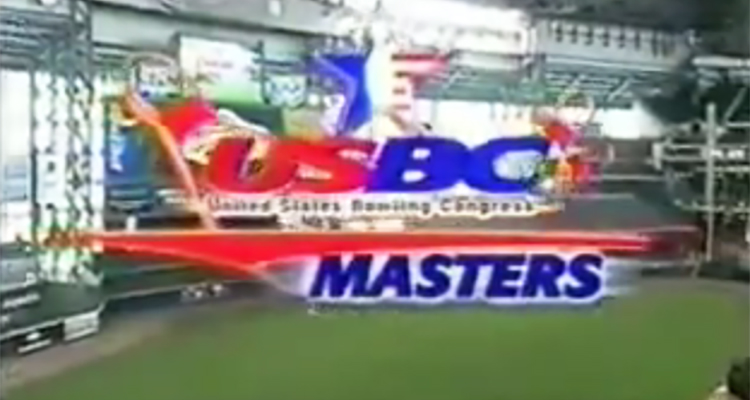Milwaukee loves bowling. The city is home to Holler House, which is the oldest sanctioned bowling alley in the country, as well as 90-year-old East Side mainstay Landmark Lanes, and dozens of other alleys that are scattered throughout the region. Between the storied history on the city’s lanes and the populace’s lingering love affair with the sport, Milwaukee seemed to have all the makings of a perfect place for professional bowling to make a big splash in an effort to regain some of the relevance its struggled to hold onto since the late ’70s.
In 2004, Professional Bowlers Association brought the USBC Masters to Miller Park. It was the first time a professional bowling tournament had been held in a Major League Baseball stadium, and was the single largest venue to ever host a PBA event. Despite being a fairly risky experiment, especially with it going up against a Packers game, the Sunday afternoon tournament that October brought approximately 4,300 spectators to a few sections on Miller Park’s first base side to see four lanes of action on the right field grass.
It was a semi-respectable turnout that totaled more than a third of the roughly 12,000 people the lane-facing sections of the stadium could seat, but after that year’s event—won by future PBA Hall Of Famer Danny Wiserman—the USBC Masters was moved to significantly smaller Milwaukee area venues the following two years. The 2005 Masters was held at the U.S. Cellular Arena (now called UW-Milwaukee Panther Arena) and the Wisconsin Exposition Center on the State Fair grounds in West Allis hosted the 2006 tourney. Pro bowling’s heyday was clearly over, and its financial struggles along with its inability to draw crowds or pull in ratings had the once-mighty association firmly ensconced alongside figure skating and bull riding as a third- or fourth-tier sport. However, the PBA wasn’t ready to accept its fall from grace. The association decided to put it all on the line and take one last big swing with a large-scale event in 2007. Learning nothing from the iffy attendance and low ratings of the 2004 event, the site for this last desperate plea for notoriety was, once again, Miller Park.
“Bowling is a sport, just like baseball, just like football, basketball,” USBC chief executive officer (and Milwaukee resident) Roger Dalkin said in a 2004 interview. “This is a sporting venue where people know athletes compete, and what better place to showcase our athletes than a venue such as this?”
The 2007 USBC Master finals were set for Sunday, October 28 at Miller Park. This time around, the PBA was fortunate to not be up against a Packers game, as Green Bay played the following day on Monday Night Football. With the benefit of hosting the tournament there once already and having no local competition from any major sports franchise, things seemed to be looking up for a professional sports league in dire need of a turnaround. The same 12,000 seats were blocked off for spectators who were eager to help kickstart bowling again during this, the PBA’s largest and possibly its final grand public spectacle. Two lanes were installed in the outfield, that weekend’s 500 competitors were whittled down to four of the world’s best bowlers, and the stage was set for the professional bowling’s make of break moment. Everything was in place. They just needed people to show up. Unfortunately, that didn’t happen.
Just 2,712 spectators paid between $10 and $75 to witness the USBC Masters’ return to Miller Park. Ultimately, 25-year-old Sean Rash topped Steve Jaros in the finals to win his first of two career majors and the $50,000 top prize. The tournament and its laughably-low attendance was referenced on an episode of The Dollop Podcast called “Bowling In America,” which tracked the downward trajectory of the sport throughout the last 100 years.
“That many people would come out [to watch] if Bernie Brewer was going to slide into a beer,” Dollop co-host Gareth Reynolds said. “It’s awful. It’s so bad, you cancel it.”
The PBA’s 2008 USBC Masters was not cancelled, but it was pushed to the spring of 2009. More significantly, the major was moved out of Milwaukee for the first time in 2004, eventually landing in the much smaller confines of the Cashman Center in Las Vegas. In 2010, the USBC Masters moved back to its 2003 site, the National Bowling Museum in Reno, Nevada. The major has called the 1,100-capacity venue home ever since.
United States Bowling Congress (USBC) membership dropped 36 percent between 2000 and 2010, which is a likely result of the increased difficulty of making a living on the bowling circuit. Prize money is shrinking at an astonishing rate. Wiserman’s top prize take for the 2004 Masters was $100,000. Three years later, Rash earned $50,000 for winning the same tournament. Australian bowler Jason Belmonte won $30,000 for taking this year’s USBC Masters. The PBA no longer broadcasts any of its events live, a change that was implemented in 2012.
No, Miller Park didn’t kill the PBA. The under-attended debacle simply served as a stark illustration of the sport’s decline and an indication that no grandiose gesture or unique gimmick could save it. You can build it, but it doesn’t mean people are going to come.

